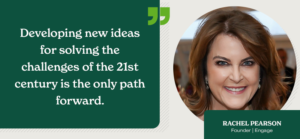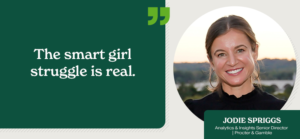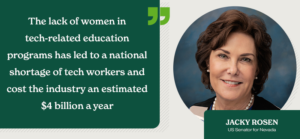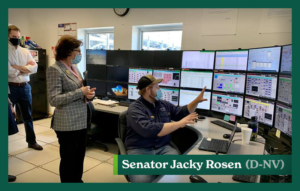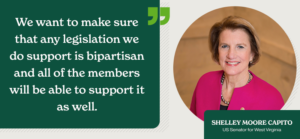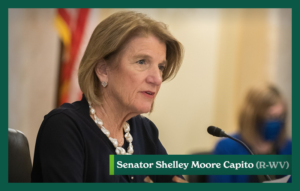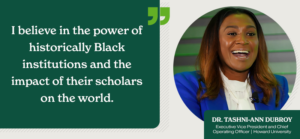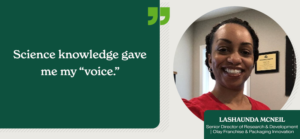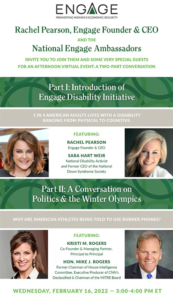Issue spotlight. Women-centered. Reliable Facts. Edition 7


Hello, Everyone!
I’m so proud of this issue of The Thread. We put it together in honor of the International Day of Women and Girls in Science on February 11th. Our editorial partner was Megan Ekstrom, Senior Manager of Global Government Relations & Public Policy at Procter & Gamble. Megan is one of the women helping Engage take flight. She is curious, committed, has a generous spirit, and I’m incredibly grateful for her friendship.
As Engage grows and I have the opportunity to speak about bipartisanship, consensus-building, dysfunction in DC, and women’s economic security with more and more women outside of Washington, DC (the best part of this effort for me), there are probably three common questions or comments that come up over and over:
- No one talks about the things you’re talking about (i.e. the media, elected officials). Why not?
- How can I learn about these issues/facts (in a way that is relatable to me)?
- What can I do to help?
The Thread is inspired by these conversations. Senators Shelley Moore Capito and Jacky Rosen have launched a new Senate Caucus dedicated to Women in STEM (Science, Technology, Engineering, and Mathematics). They are working in a bipartisan way to address how we can encourage more American women to work in STEM fields. If you do not know these two Senators, they are worth paying attention to. Of course, they belong to their own respective political parties, and you have to dig a little deeper to learn about them through a lens that is not hyperpartisan, which is one of the biggest challenges to democracy of our time. These interviews give you a chance to do that.
Engage will continue our work on STEM in 2022 and beyond, so we will be coming to you with opportunities to support their work and the bipartisan pieces of legislation written about by Jodie Spriggs below.
Jodie’s insightful piece draws out a central theme of Engage’s work: the “through line,” if you will, of the often-competing forces of motherhood and work at play in nearly all the challenges facing women as they work towards economic security. According to the US Census Bureau, 48% of women between age 15 and 44 don’t have children, and I recognize that their lives are far from challenge-free as they work to build wealth. However, for the remaining majority who are mothers and caregivers, the lack of accessible and affordable childcare options and paid leave policies has us at a breaking point. What I love about Jodie’s piece is that she directs us to solutions.
Developing new ideas for solving the challenges of the 21st century is our only path forward. I believe it must be born of a new spirit of public and private sector cooperation. This will require our elected leaders at the federal, state, and local levels to stop fighting amongst themselves and start working on behalf of American women and their families for consensus and solutions.
This edition also goes on to feature two remarkable Engage Women, Dr. Dubroy and LaShaunda McNeil. Once you’ve learned more about them, please forward this issue to everyone you know so they can meet all these remarkable women. They deserve to be the “influencers” of our day.
At the end there is an invitation to our first virtual event of the year: a two-part conversation with some very special guests. The first segment will be a deep dive on Engage’s Disability Initiative, slated to formally launch in the coming months, followed by a timely conversation on the Beijing Winter Olympics and the surrounding political and national security complexities as we cheer on our American athletes.
I want to thank Procter & Gamble and Olay. Their dedication to the issue of STEM and passion for women’s equity comes through in the people that work there. To my mind, that is the truest test of corporate leadership.
Finally, Monday is Valentine’s Day. A day celebrating love. I’m sending mine to you wherever you are. In that spirit, here are a few of my favorite quotes:
“Love is a great beautifier.” – Louisa May Alcott
“Love cannot remain by itself – it has no meaning. Love has to be put into action and that action is service.” – Mother Teresa
“The more one judges, the less one loves.” – Honoré de Balzac
Thanks for reading,
Rachel
And remember, Women Outnumber, Outvote and Outlive Men.™
Rachel Pearson is the Founder of Engage. You can reach her at rachel@engagewomen.org.
Ten years ago, the United States spent nearly $3 billion tax dollars on STEM education supporting and encouraging underrepresented groups to enter STEM fields. And yet, a decade later, women are still leaving at alarming rates.
So, any research professional like myself has to ask, what gives?
In the October Issue of The Thread, I talked about Olay’s research looking at three drop-off points during the trajectory of a woman’s career into a STEM field in the U.S. – the Middle School Cliff, the Sophomore Slump and the Early Work Force Exit. This downward trajectory contributes to the STEM gap in the US; only 27% of the careers are held by women. Though the cliffs of middle school and the slumps of college are well-documented, we are starting to uncover more about that 3rd drop off point: the early workforce exit.
I recently came across new findings that suggest one factor could be a major contributor to this early departure: parenthood. A significant number of highly-educated women leave full-time STEM jobs upon having or adopting a child, the study found. This reason causes women to leave at twice the rate of men. The study found new mothers switched to either part-time work in STEM (11%), part-time work outside of STEM (6%), or left the workforce entirely (15%) by 2010. New fathers did the same too, though in significantly smaller proportions.
But like any complicated issue, there are multifaceted reasons as to why women in STEM depart the workforce. Sadly, one of the most well-documented is sexism. At Engage’s October Summit, I moderated a panel of female STEM professionals, one of these was an incredible young woman who once had a promising career in coding and computer programming. “I would post coding content on my Instagram and was shocked by the messages I received telling me that girls don’t know how to code or girls don’t belong in coding.” In today’s world, women are still being trash talked? Sadly, the answer is yes, the smart girl struggle is real.
So, let’s take the challenge of having a child and pair it with the sexism that so many women in STEM face today; it’s no wonder so many women are leaving their promising STEM careers! As a society, we have to do better to not only encourage young women to pursue the STEM fields, but keep them there.
Or, as new national legislation sets out to do: bring them back.
The STEM RESTART Act is bipartisan policy introduced by Jacky Rosen, a former STEM professional turned U.S. Senator and Cindy Hyde-Smith, a long-time public servant of Mississippi, now serving in the Senate. The bill is unique in that it would establish a new national program to support mid-career workers in reentering the STEM workforce by awarding grants to certain small- and medium-sized businesses.
It’s also unique that it’s one of the few government STEM interventions that doesn’t focus on the other two drop offs for middle school and college. Two other key initiatives are the Women and Minorities in STEM Booster Act and the STEM Opportunities Act, the latter of which supports caregiver policies for women in STEM careers, also helping to slow the early workforce exit.
The problem will also take more than legislation to solve. We need to engage with men in a constructive way to change the culture around the STEM workplace. At P&G, we’re supporting Men Advocating Real Change (MARC), an initiative by Catalyst to create more inclusive workspaces that encourage gender partnership.
Our business is one of many that is upgrading benefits for working parents to help us keep more of the amazing women that fill our many STEM roles. This includes fertility support and equal paid leave for all partners regardless of who is the birthing parent. We encourage others to take these steps that help us not to lose the contributions, ingenuity, and power of women innovators in STEM.
It will take all of us — with increased urgency — to finally end the exit of women from STEM. But this is bigger than providing women the ability to thrive where they are most talented. It is an opportunity to unleash the energy of millions of women ready to shape our world and build the technology of the future. So what are we waiting for?
Jodie Spriggs is an Analytics & Insights Senior Director at Procter & Gamble
What role does STEM play in the US? What does it mean to be an engineer?
Science, technology, engineering, and math (STEM) play a significant role in our economy. Economic growth, military capabilities, and living standards in the United States all rely on innovation, research, and technology. To keep up our progress in these areas and ensure we can compete in a global economy, the United States will need a qualified STEM workforce to create new products and services. STEM job growth has been three times faster than non-STEM job growth over the last decade, but American businesses routinely express concerns about not being able to recruit qualified STEM workers and the struggle to hire.
Engineers, in particular, are in short supply. China, India, and Singapore generate twice as many engineers as we do here in the United States. More than 300,000 tech-related jobs in the United States remain unfilled due to a lack of skilled workers. This disparity emphasizes the essential need for a stronger engineering pipeline if the United States is to remain competitive in global markets. Since engineering jobs are among the most difficult to fill in the United States, many educators, researchers, and practitioners are working to recruit more women to engineering in order to overcome this deficit.
Why is STEM a male-dominated field? What is it like to be a woman in STEM?
There are many possible factors contributing to the disparity in STEM, including implicit bias, too little public coverage of successful women in STEM, gender stereotyping, and less family-friendly flexibility in the STEM fields. Regardless of the causes, we need to encourage and support women in STEM, and that has to start in the classroom at a young age. According to recent data from the U.S. Census, women are making gains but are still “vastly underrepresented” in the STEM workforce, holding less than one-third of all STEM jobs. This has been the case throughout the past decade, even as college-educated women have increased their share of the overall workforce. For example, the lack of women in tech-related education programs has led to a national shortage of tech workers and cost the industry an estimated $4 billion a year. The underrepresentation of women in STEM jobs and among STEM degree holders is an untapped opportunity to expand STEM employment in the United States.
As a former computer programmer and systems analyst, I worked for big companies in Nevada like Summa Corporation, Citibank, and Southwest Gas long before I ever even thought about running for office. I’ve also experienced firsthand how STEM has felt inaccessible to women. When I started my career, women weren’t getting equal pay for equal work. A big part of how I found my career path in STEM was through higher education. I took computer science classes as an undergrad student and when I started working as a programmer in the 1980s, I took community college classes in Clark County to get my associate’s degree in computing and IT — so I could keep building my skills and advance my career.
You’ve just launched the bipartisan Women in STEM Caucus in the Senate. How did the Caucus come together? What is it like working with your Co-Chair?
The caucus came together because we wanted to foster more discussion in Washington about women in STEM and translate what we hear into meaningful changes. We also wanted to partner with the Congressional Women in STEM Caucus in the House of Representatives, which launched last year. It’s an area of bipartisan interest where Senator Capito and I have worked together in the past. Our bipartisan Building Blocks of STEM Act, which was signed into law in 2019, created and expanded upon STEM education initiatives at the National Science Foundation (NSF) for young children, including new research grants to increase the participation of girls in computer science. Senator Capito and I share a commitment to advancing girls and women in STEM.
We want to encourage and support women in STEM with a goal of gender parity. Given the high-quality, good-paying jobs in STEM fields, there is great opportunity for growth in STEM in support of American competitiveness, innovation and jobs of the future.
Senator Capito is a great partner to work with on these goals. My motto is: “Agree where you can and fight where you must.” Senator Capito and I both know how to focus on the areas where we can work together, and we leave our politics at the door when we’re having those discussions.
What are the Caucus’s plans for the immediate future? If it could automatically pass one bill, what would it be?
Our caucus is going to be focused on identifying and promoting policies, programs, and initiatives that support our goal of getting more women and girls, including women of color, in the talent pool for STEM fields and raising more awareness about how this is holding back our economy. We also want to elevate this issue with our fellow senators, and partner and collaborate with all of the incredible organizations across the country in both the public and private sectors that are doing such amazing work to build the pipeline of women in STEM – like Society of Women Engineers or Girls Who Code, for example.
Some of the issues we will look at include expanding STEM education and workforce training in rural and underserved areas, strengthening partnerships between universities and federal research agencies, and assessing how we better match skills training to fill jobs in both the public and private sectors.
Ultimately we hope our caucus will develop new policy solutions with a bipartisan, results-oriented approach increasing and expanding the participation of women in STEM classes and jobs.
One bill I think is particularly important is the U.S. Innovation and Competition Act, which passed the Senate last year and which Senator Capito and I both supported. The bill would make significant investments in science, research, and innovation, and ensure those funds are disbursed around the country so that research universities in states like Nevada and West Virginia can continue the important work that we’re doing. This comprehensive package also includes my Rural STEM Education Act, which I jointed Senator Roger Wicker (R-MS) in introducing. It’s so important to invest in key areas of growth, address supply chain gaps, investing in STEM education in all of our communities, and expand our STEM workforce if the U.S. is going to be competitive in the global economy.
What can the Engage community do to support your work on behalf of women in STEM?
We need more women leading the charge on the next wave of groundbreaking research and making America a global leader in scientific and technological advances. We need to get more girls interested in STEM education and get more young women in the pipeline for STEM jobs. This is so important to building a 21st-century workforce. We are committed to encouraging more women and other members of underrepresented groups to lead in STEM fields, and we hope you will support our efforts. What you can do is to continue to share your stories with elected leaders and decisonmakers, both about the barriers you have faced in the STEM workforce and about how you have overcome them to become successful women in STEM.
Who inspires you on a daily basis?
Our bipartisan group of 24 women serving in the U.S. Senate inspires me every single day. With all the talk of how Washington is broken and nothing can get done, we have always been able to sit down with each other, share a meal, talk about our families and where we’re from, and focus on the areas where we can find common ground. What these women have accomplished as professionals and elected officials, and what they accomplish every day in terms of being a voice for their constituents, is remarkable and I’m honored to part of this group.
If you could have any job in the world for one month, what would it be and why?
I love the job I have. If you had told me when I was just getting started as a computer programmer that I would become a Senator for even just one month, I wouldn’t have believed you, but now I have the privilege of serving Nevada and the country every day.
What is one thing you have seen, read, or heard that you would recommend to everyone?
When I was thinking about running for office, one thing I heard that stayed with me is that if you can impact even just one person, then you have changed the world. It’s so important for everyone – whoever you are in your family, your community, your workplace – to use their voices to raise awareness of issues that are important to you.
What role does STEM play in the US? What does it mean to be an engineer?
STEM fields are where the in-demand jobs are right now, and it’s where they will be in the future. For example, in 2020, West Virginia had 1,342 open tech jobs, paying over $75,109 per year. The average salary in my home state of West Virginia was around $40,000 in 2020. More and more women are pursuing college degrees, which opens up opportunities to competitive salaries and job opportunities. These STEM jobs are in industries that are critical to our economy, and they will help our states and country as a whole grow.
Why is STEM a male-dominated field? What is it like to be a woman in STEM?
I would actually say that women representation among the STEM fields varies by occupation, but when it comes to engineering or computer science positions, women are still under-represented. I would say one of the main reasons for this could be that women lose confidence or interest in STEM fields as they get older. I know we’ve all been in the position where we have thought we are not strong in math, or we are ready to give up. This is one of the reasons I launched my West Virginia Girls Rise Up program to help inspire the next generation of female leaders in my state to help instill confidence in women at an early age.
You’ve just launched the bipartisan Women in STEM Caucus in the Senate. How did the Caucus come together? What is it like working with your Co-Chair?
As a former educator and college advisor, I have seen firsthand how young women often do not consider STEM education for career paths. Senator Rosen has a unique background in STEM as a former computer programmer, and between our two backgrounds, we’ve found a lot of common ground when it comes to this issue, which ultimately led us to team up on the Women in STEM Caucus. It is our hope that the caucus will help promote policies and other efforts that will increase opportunities for young students to engage in STEM fields. Inspiring our young women to rise up and reach their potential is so important. Senator Rosen and I have worked together on a number of bipartisan issues and STEM is one of those issues. We’ve also become good friends as we’ve worked together and I’m excited to be a part of this partnership that will help continue the momentum we’ve already started.
What are the Caucus’s plans for the immediate future? If it could automatically pass one bill, what would it be?
I am working closely with Senator Rosen on planning our first Women in STEM Caucus event. We are still very much in the early planning phase, but we look forward to announcing more details soon. Since Senator Rosen and I launched the caucus in November, we are still reaching out to our female Senate colleagues to recruit more members. We also want to make sure that any legislation we do support is bipartisan and all of the members will be able to support it as well. Bipartisanship is very important to us. I can also tell you that my main focuses on the caucus remain: Improving early STEM education and strengthening the pipeline from the classroom to STEM careers.
What can the Engage community do to support your work on behalf of women in STEM?
Something the Engage community could do is continue to stay active in this field and stay in touch with my office. It is incredibly important that we have bipartisan solutions to these issues. In The Future of Work for Millennial Women article, there are a lot of lessons Congress can learn from what is being done at the state level in order to address the challenges women face pursuing STEM careers. Who knows, maybe this will be a topic for a future Women in STEM Caucus event!
We’ve written the next three questions, so that the Engage audience can get to know you a little better. Who inspires you on a daily basis?
Anytime I think about someone who has been the biggest inspiration to me, I think of my mother. She was a very smart, gracious, compassionate, and competitive person. She taught me to love my family unconditionally and she taught me to pursue my passion. Even though she passed away a few years ago, she’ll always be with me. I’ll always be thankful to her for being such a great inspiration for me.
If you could have any job in the world for one month, what would it be and why?
Hands down, a professional tennis player. I love to be active and I am an avid tennis player, golfer, and runner. All of my children played sports growing up (one was an NCAA Division I Volleyball player) so it’s something I enjoy doing and watching.
What is one thing you have seen, read, or heard that you would recommend to everyone?
I’m currently reading a book about former President George H.W. Bush called, “The Man I Knew: The Amazing Story of George H. W. Bush’s Post-Presidency,” which is written by his former Chief of Staff, Jean Becker. It’s a fun, contemporary book that really shows you what a great and kind human being President Bush was. I haven’t finished yet, but I highly recommend the book to anyone looking for a good read
Please introduce yourself to the Engage community! Who are you?
I am currently the Executive Vice President and Chief Operating Officer of Howard University, where I’ve proudly served since 2017. I’ve enjoyed a fulfilling career in higher education for the better part of a decade, having previously led my alma mater, Shaw University, in Raleigh, NC, as President, Special Assistant to the President, Department Chair and a faculty member in the Department of Chemistry. I started my career in the chemical industry as a bench chemist at BASF. I’ve been an entrepreneur since my youth. I co-owned a hair care company, hair salon, and non-profit that catered to young women in STEM, but greater than these accomplishments, I am a mother to a 12-year old girl boss.
How did you get to where you are in your career? Why do you do what you do?
I thoroughly enjoyed my career in corporate America and used the lessons learned in business to set up the infrastructure to start my own hair care company. While pursuing entrepreneurship, I wanted to give back to the young people in a more substantive, experiential manner that went beyond philanthropic donations to my alma mater, so I started my career in academia as an Organic Chemistry professor. The rest of my career trajectory in academia wasn’t planned. The outcomes I led my team to achieve in each role garnered the attention of various organizations who provided an opportunity for me to pursue various career opportunities. I have stayed true to increasing minority representation in STEM fields. I believe in the power of historically Black institutions and the impact of their scholars on the world. No other place can take students of all levels of socioeconomic comfort, exposure to industry and experience and turn them into world-class professionals in nearly every endeavor and global citizenry. It is my job to ensure that institutional systems are in place to ensure the individual success of each student we serve, to inspire them to the greatest heights of curiosity and achievement, and along the way, to encourage them to think as global citizens responsible for helping others achieve their goals. Watching the vision come to fruition energizes me.
What do you wish you knew when you were a 20-something starting out?
In my twenties, I was laser focused on completing my studies and I did not get the opportunity to travel the world leisurely like I should’ve or pursue many experiential paths that fed my soul. Doing so early would’ve helped to inform my personal and professional choices even further. In my thirties, my world travels helped to broaden my view of the world and of people. Those experiences have helped to inform my executive leadership practices – as I have developed a globally inspired approach to leadership, especially in higher education.
What role do politics or policy have in your life? What are your legislative priorities, if any?
I can’t imagine any aspect of my life that politics doesn’t impact. The roles that I have taken on in higher education require that I am in tune with the ebbs and flows of the various election cycles, locally and nationally. In the field of higher education, this is often a standard element of the job description when you are trying to accomplish the greater good for a diverse breadth of campus stakeholders, and for the institution’s sustainability. To be an effective leader, you have to be open-minded to all conversations, people and possibilities about the role of government in shaping everyday life. In addition to policies impacting college affordability and access, we are focused on influencing decision-making around research investment, regulations impacting online learning, climate change, human resources and data security, to name a few.
What is the one change you believe would lead to the biggest improvement for women’s economic security?
Broadening the national brain trust of any country with expanded roles and training for women, while increasing access to capital, can translate to better outcomes in economic security for women globally. If young girls would get the same opportunities that young boys get, we would not lag in primary, secondary and tertiary educational attainment. Similarly, there are too many companies and institutions that have never been led by women. The leadership lens in key financial and socioeconomic constructs have been skewed for generations and will be for much longer unless there is an intentional effort to bring women to the table in positions that impact people and investment.
What attracts you to Engage? If you have already participated in an Engage event, what was it like?
Engage is a powerful organization with an immense impact. I had the pleasure of experiencing an Engage event and listening to a few panelists as they explored various challenges that impact women nationally and globally. It is always fulfilling to hear how influential women in positions of power support each other privately and publicly, but also to hear of the stories of everyday women who are providing solutions to complex problems in their communities. That’s the beauty about the diversity in the Engage audience and stage.
Who are you most inspired by right now?
Since experiencing the COVID-19 pandemic, I have a new appreciation for how we rely on each other, even in a world that is heavily dependent on technology. We all learned the true definition of who a frontline worker is and the impact they have on our everyday lives. I am inspired by the brave people on the frontline who cared for our health, transported goods, fed us, and kept the lights on during the pandemic.
What is one thing you have seen, read, or heard that you would recommend to everyone?
Isabel Wilkerson’s book, Caste, is a very good read. In the book, she challenges the reader’s intellectual curiosity and lends insight into societal constructs that we’ve come to accept, without known historical context and current day impact. Even if one doesn’t agree with her opinion, she certainly forces the reader to think about the norms we’ve adopted as a society and the impact it has on the underrepresented among us.
If you could have any job in the world for one month, what would it be and why?
I have always wanted to teach children and impact their view of science and their approach to learning the content. I would teach a 5th grade class for a month and would hope to leave an indelible imprint on their young minds.
Who do you love to follow on social media and why?
I follow an eclectic group of people and organizations, some with polar viewpoints. I experience a myriad of emotions when reading about the same topic from media with opposing political views and observing the slant presented. I enjoy observing people who are charitable, and the impact they have on humanity. I also follow people who add levity to the social media space. Then there are others who are making an impact in higher education, especially at HBCUs, and their views often pique my interest as well.
Why do you think it’s important for women to engage with the political system?
Representation, specifically in the political system, is the hallmark of any modern, progressive society. Regardless of political ideology or willpower, women have to be a part of policy development, assessment and lawmaking to ensure that all people have positive outcomes in their lives. We must remember — empowered women raise empowered boys and girls in households who value equality and promote equity in all areas of life. It’s not just about any one woman or group of women; it is about improving outcomes for communities worldwide. Women tend to be selfless in that respect. We understand the need to have gender representation and often introduce equity and empathy in the decision and policy making processes.
Please introduce yourself to the Engage community! Who are you?
LaShaunda McNeil, Ph.D., Senior Director, Research & Development, Olay Franchise & Packaging Innovation. I have nearly 16 years of experience in R&D, working across P&G Beauty brands (Secret, H&S, Pantene, SKII, and Olay). I am also a wife, mother of an active 9-year-old boy, flower-garden obsessed, wannabe yogi, Netflix enthusiast. Before P&G, I earned a Ph.D. in Medicinal Chemistry, studying structure and function of heat shock proteins in an effort to understand diseases that stem from aberrations in protein folding and trafficking in the cell (e.g. Alzheimer’s disease). I completed post-doctoral training at the University of Chicago to further understand signaling pathways that dysfunction in Alzheimer’s disease.
How did you get to where you are in your career? Why do you do what you do?
I have always had a passion for learning, and I took a liking to science at a young age. As the youngest of four girls in a house full of women, science knowledge gave me my “voice”. Even my sisters listened when I talked science! I have a passion for learning and solving problems and making sense of the unknown. That led me to research, and the rest is history. There were many people along the way that helped and cheered me on: my grandmother was selfless and giving of herself to so many. She babysat many neighborhood kids for free. Many of the parents were single women who had the opportunity to better themselves knowing that their children were in safe hands. Many of these women came back to share stories at my grandmother’s funeral. Because of my grandmother, I like to give back by mentoring and sharing my knowledge, passion, and know-how with kids and young adults just starting out.
What do you wish you knew when you were a 20-something starting out?
Believe in yourself and don’t believe the naysayers that say it’s “too hard” — “it” being that class, that major, that goal, or anything else. It is difficult to keep the faith and keep pushing when you come from a place of lack. You can get comfortable and think “most people don’t get this far,” but keep pushing. Go for the GOAT!
What role do politics or policy have in your life? What are your legislative priorities, if any?
I am a staunch advocate for voting rights and participant in the voting process at every level, local to executive level.
What is the one change you believe would lead to the biggest improvement for women’s economic security?
Equal pay and equal opportunity. One without the other doesn’t work.
What attracts you to Engage? If you have already participated in an Engage event, what was it like?
I have never participated in an Engage event, but I would love to in the future!
Who are you most inspired by right now?
My 9-year-old son inspires me! He is still untainted by the world and it is my job to foster his openness, enthusiasm, creativity, and imagination while helping him reach his full, unlimited potential.
What is one thing you have seen, read, or heard that you would recommend to everyone?
The Color Purple by Alice Walker. The movie was a wonderful adaptation depicting a harrowing story of the good and evil in all of us, faith, family, generational curses and breaking them, and true resilience.
If you could have any job in the world for one month, what would it be and why?
A writer! There are so many stories that I have to tell, to teach, dream, to reflect on, but never enough time to get them all out.
Who do you love to follow on social media and why?
I recently started to follow Christine Platt the “Afrominimalist” on Instagram. She has intriguing ideas on living with less and learning to dissociate absolute value with things and excess. I think her ideas have interesting ties into overconsumption, health disparities, and beyond.
Why do you think it’s important for women to engage with the political system?
It is essential for women to engage in the political system to further gender equality and equality in general for physical, mental, and emotional health.
We hope you will join us at our virtual event on Wednesday, February 16th from 3:00-4:00pm ET. The invitation is copied below:



